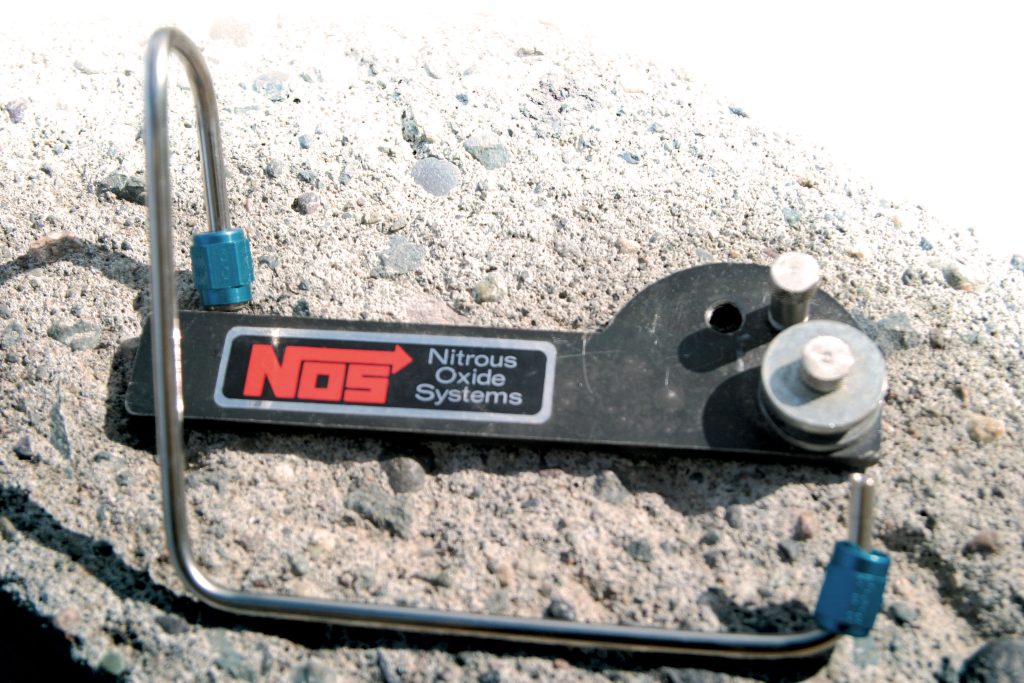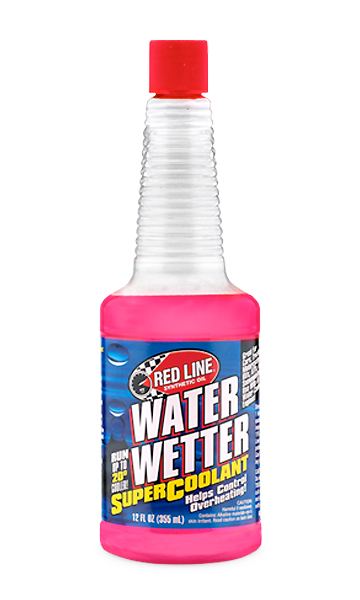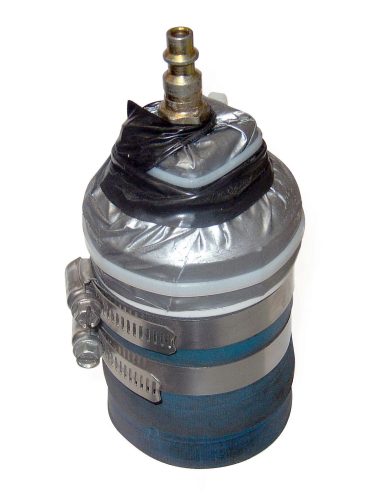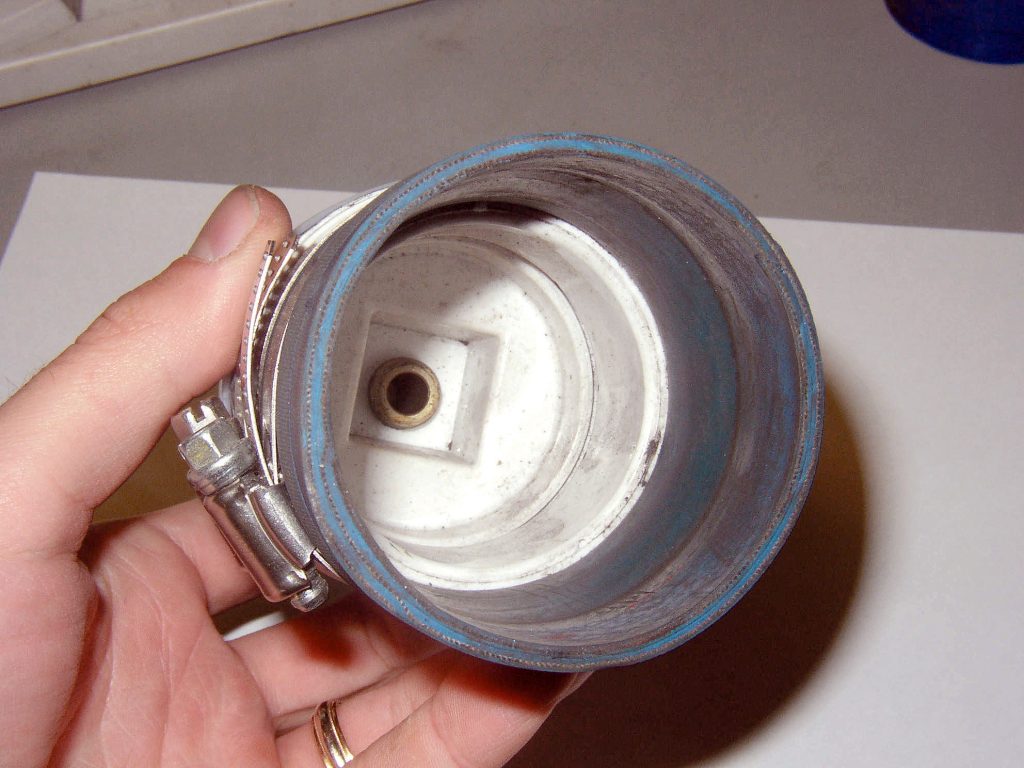
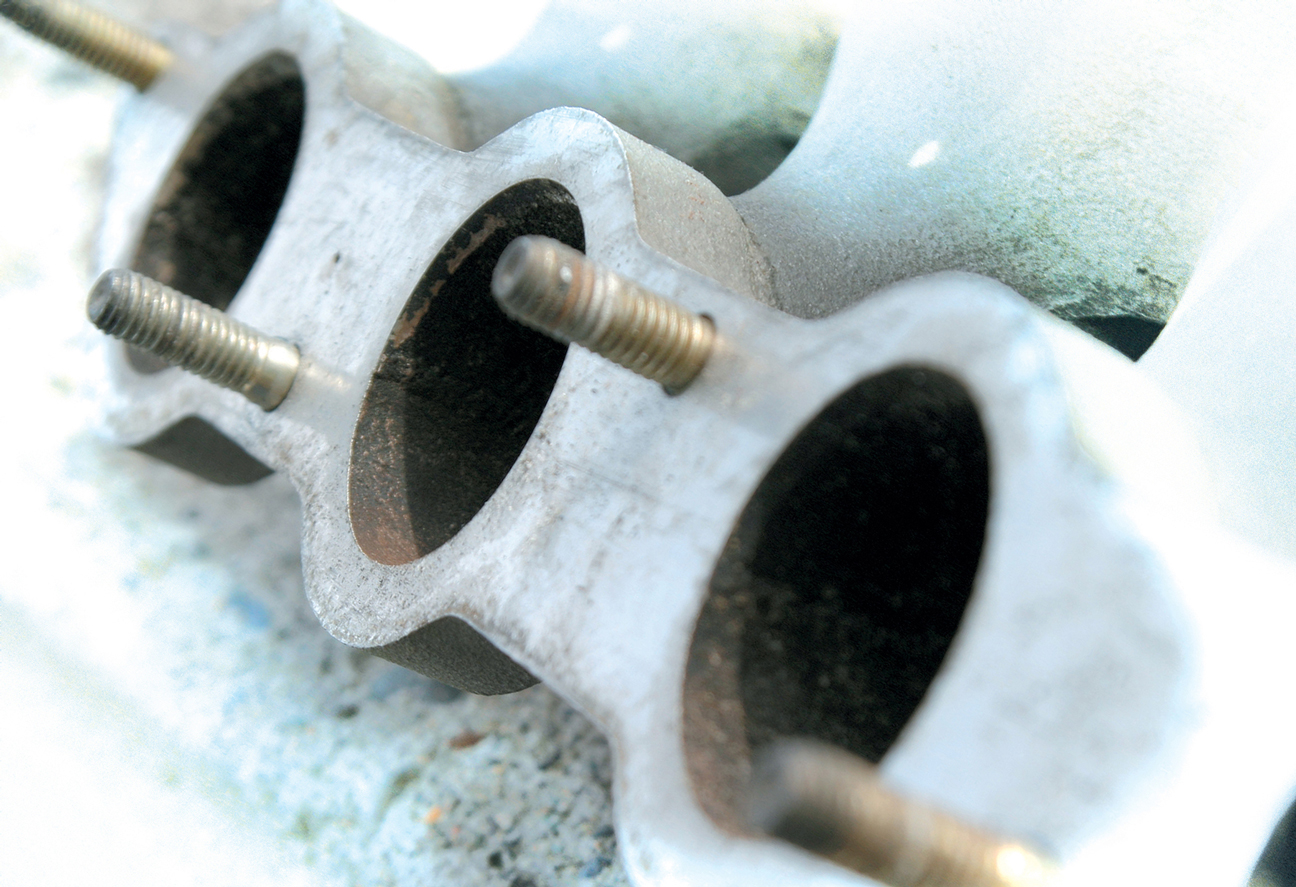

THE AUTO BUILDER
Featured
- All Post
- 20 High Priority - SR Super Rod
- Builds
- 25 High Priority - FB Ford Builder
- Cars
- 30 High Priority - AR American Rodder
- 01 Post Status
- 35 High Priority - RD Rodders Digest
- 40 High Priority - OTR On the Road
- 45 High Priority - SRB Street Rod Builder
- 50 High Priority - TB Truck Builder
- 55 High Priority - BSCENE Buckaroo Scene
- 60 High Priority - FPB Family Power Boat
- Trucks
- Swaps
- Performance Boats
- _000 Home Sliders
- Builders
- 00 Sidebars
- Manufacturers
- 05 High Priority - HCI Hot Compact Imports
- 05 Publications
- 10 High Priority - CR Chevy Rumble
- Back
- Chassis
- Engine
- Fuel System
- Electrical
- Exhaust
- Transmission / Drivetrain
- Suspension
- Steering
- Brakes
- Wheels and Tires
- Interior
- Exterior
- Accessories
- Power Adders
- Back
- Chassis
- Engine
- Fuel System
- Electrical
- Exhaust
- Transmission / Drivetrain
- Suspension
- Steering
- Brakes
- Wheels and Tires
- Interior
- Exterior
- Accessories
- Power Adders
- Back
- Chassis
- Engine
- Electrical
- Exhaust
- Fuel System
- Transmission / Drivetrain
- Suspension
- Steering
- Brakes
- Wheels and Tires
- Interior
- Exterior
- Accessories
- Power Adders
- Back
- Chassis
- Engine
- Electrical
- Exhaust
- Fuel System
- Transmission / Drivetrain
- Suspension
- Steering
- Brakes
- Wheels and Tires
- Interior
- Exterior
- Accessories
- Power Adders
- Back
- Chassis
- Engine
- Fuel System
- Electrical
- Exhaust
- Transmission / Drivetrain
- Suspension
- Steering
- Brakes
- Wheels and Tires
- Interior
- Exterior
- Accessories
- Power Adders
- Back
- Chassis
- Engine
- Fuel System
- Electrical
- Exhaust
- Transmission / Drivetrain
- Suspension
- Steering
- Brakes
- Wheels and Tires
- Interior
- Exterior
- Accessories
- Power Adders
- Back
- Chassis
- Engine
- Fuel System
- Electrical
- Exhaust
- Transmission / Drivetrain
- Suspension
- Steering
- Brakes
- Wheels and Tires
- Interior
- Exterior
- Accessories
- Power Adders
- Back
- Engine
- Fuel System
- Electrical
- Outdrives
- Steering
- Interior
- Accessories
- Power Adders
- Exterior and Hull
- Back
- Chassis
- Engine
- Electrical
- Exhaust
- Fuel System
- Transmission / Drivetrain
- Suspension
- Steering
- Brakes
- Wheels and Tires
- Interior
- Exterior
- Accessories
- Power Adders
- Back
- Chevrolet
- Cadillac
- Pontiac
- AMC
- Buick
- Jeep
- Lincoln
- Ford
- Honda
- GMC
- BMW
- Mitsubishi
- Dodge
- Nissan
- Chrysler
- Subaru
- Toyota
- Plymouth
- Mercury
- Volvo
- Volkswagen
- Oldsmobile
- Acura
- Back
- 05 Pub HCI Hot Compact Imports
- 15 Pub 4x4 4x4 Builder
- 20 Pub SR Super Rod
- 25 Pub FB Ford Builder
- 30 Pub AR American Rodder
- 35 Pub RD Rodders Digest
- 40 Pub OTR On the Road
- 55 Pub BSCENE Buckaroo Scene
- 10 Pub CR Chevy Rumble
- 50 Pub TB Truck Builder
- 60 Pub FPB Family Power Boat
- 45 Pub SRB Street Rod Builder
- Back
- Chip Foose
- Ring Brothers
- Jack Fuller
- Bob Cullipher
- Jerry Nichols
- Bobby Alloway
- Jesse James
- Carl Casper
- J.F. Launier
- Steve Sellers
- Boyd Coddington
- Rad Rides by Troy
- Cal Auto Creations
- George Barris
- West Coast Customs
- Back
- Street Rods
- Hot Rods
- Late Model
- Drag Race
- Handling
- Compact Cars
- Chassis
- Engine
- Fuel System
- Electrical
- Exhaust
- Transmission / Drivetrain
- Suspension
- Steering
- Brakes
- Wheels and Tires
- Interior
- Exterior
- Accessories
- Power Adders
- Chassis
- Engine
- Fuel System
- Electrical
- Exhaust
- Transmission / Drivetrain
- Suspension
- Steering
- Brakes
- Wheels and Tires
- Interior
- Exterior
- Accessories
- Power Adders
- Chassis
- Engine
- Electrical
- Exhaust
- Fuel System
- Transmission / Drivetrain
- Suspension
- Steering
- Brakes
- Wheels and Tires
- Interior
- Exterior
- Accessories
- Power Adders
- Chassis
- Engine
- Electrical
- Exhaust
- Fuel System
- Transmission / Drivetrain
- Suspension
- Steering
- Brakes
- Wheels and Tires
- Interior
- Exterior
- Accessories
- Power Adders
- Chassis
- Engine
- Electrical
- Exhaust
- Fuel System
- Transmission / Drivetrain
- Suspension
- Steering
- Brakes
- Wheels and Tires
- Interior
- Exterior
- Accessories
- Power Adders
- Chassis
- Engine
- Fuel System
- Electrical
- Exhaust
- Transmission / Drivetrain
- Suspension
- Steering
- Brakes
- Wheels and Tires
- Interior
- Exterior
- Accessories
- Power Adders
- Back
- 05 Post Imported
- 20 Post Missing Images (All)
- 25 Post Missing Images (Partial)
- 15 Post In Progress
- 30 Post Internal Review
- 40 Post On Hold
- 50 Post Approved
- 10 Post Images Imported
- 17 Post Missing TXT Files
- 18 Post Missing PDF Files
- 27 Post Missing Content
- Back
- Chassis
- Engine Swaps
- Interior Swaps
- Driveline
- Back
- Street Trucks
- OffRoad Trucks
- Chassis
- Engine
- Fuel System
- Electrical
- Exhaust
- Transmission / Drivetrain
- Suspension
- Steering
- Brakes
- Wheels and Tires
- Interior
- Exterior
- Accessories
- Power Adders
- Chassis
- Engine
- Fuel System
- Electrical
- Exhaust
- Transmission / Drivetrain
- Suspension
- Steering
- Brakes
- Wheels and Tires
- Interior
- Exterior
- Accessories
- Power Adders
- Back
- 01 Sidebar Left
- 01 Sidebar Right
Spotlighter
POPULAR READS
150 TUNER TIPS
Useful Hacks To Improve Your Performance
Author

Sean Greene
Words & Photography
Disclaimer: Some of the tips presented here are not intended for street-driven vehicles and some modifications discussed may not be legal or appropriate for on-road use. No endorsement of any products, services or information is expressed or implied by any information or content referred to or included in these tips. If you choose to use any information in the tips presented herein, you do so at your own risk.
Have you ever looked at another enthusiast’s ride and noticed something unique, yet very clever, that made the vehicle stand out or perform better and thought, “Why didn’t I think of that?” Well, we’ve done some of the homework, legwork and research to provide you with a similar advantage. We scoured the tuning shops and interrogated the pros to find out what tips they have done that our readers could apply to their own vehicles.
Before you read any further, you should know that some of these tips, while helpful, may be on the risky side and discretion should be used when trying them. Secondly, many of these tips apply to off-road use only, so warranty-conscious enthusiasts beware. You are on your own from here on in.
The good news is that there are many modifications here that can be done without significant risk. So sit back, digest and enjoy. Some of these tips will be so simple yet effective and the best part is that they won’t necessarily cost you an arm and a leg to perform. Now break open your toolbox and start wrenching!
1. PORT MATCHING
If you are lucky, the engine in your vehicle has exhaust and intake manifold ports that line up perfectly to the cylinder head. But chances are this isn’t the case. You can pick up a few horsepower by carefully removing material in the manifold ports to match the gasket or the gaskets to match the port. This can also be done on the cylinder head.
2. TRANSMISSION LINE PRESSURE INCREASE
This simple modification pertains to automatic transmissions only. By using a factory service manual and looking at the wiring diagrams, you can increase line pressure within the transmission. This results in stronger shifts by simply adding a drop resistor that can be activated with a relay and dash-mounted switch. Great little weapon for bracket racers, too.
3. GET THE LEAD OUT
If you are a bracket racer or racing fanatic, you should know that weight is the enemy. Removing your spare tire and jack can save up to 30 pounds. If you need more weight reduction, drain your windshield washer reservoir. To the average Joe this sounds nuts, but you diehards understand.
4. SPARK IT UP
This is a simple yet overlooked tip that can restore a few ponies: pay attention to the condition of your spark plugs. Worn plugs won’t make optimum spark. Also, switching from a conventional plug to an iridium unit may also help. For a few more bucks, it’s worth it.
5. CLEAN TERMINALS =HAPPY CHARGING SYSTEM
Over time, you will experience negative battery terminal corrosion, which affects conductivity and looks unsightly. To avoid this, use an aftermarket terminal that has better conductivity and is less likely to corrode, or use a protective spray. You can clean up this mess with a mixture of water and baking soda applied with an old toothbrush.
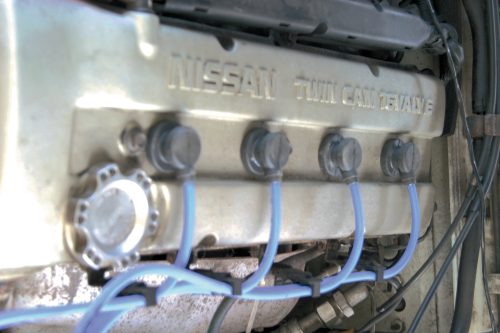 6. REPLACE WORN IGNITION WIRES
6. REPLACE WORN IGNITION WIRES
This is a no-brainer, but those NGK wires that used to be bright blue and are now black should be replaced. If your ride bogs and just plain runs like it has twice its mileage, try swapping the ignition wires.
7. REDLINE WATER WETTER
This product works wonders by raising the engine’s boiling point and increasing the cooling capacity your coolant. This tip is used by many forced-induction fanatics.
8. LOWER TEMP THERMOSTAT
Head to your favorite auto parts store and see if it has a thermostat that opens sooner (lower temperature) than your factory unit. If it works in your application, this will allow your car to run cooler sooner and can minimize power lost to heat.
9. STAY LUBED
One of the things top racers do is change their oil before and after each event. Having fresh, clean oil in your engine serves many purposes. For your street machine, change oil every 1,500 miles.
10. MORE GROUND
A thicker ground on the Nissan mass airflow sensor (MAF) is a mod many enthusiasts perform. The factory ground wire on the MAF tends to corrode, causing inadequate signal. Your car will run better due to the stronger, constant signal sent to the ECU.
11. GUTTED AIR BOX
For those tuners who desire maximum airflow, but cannot use a cone-style filter, this mod is for you. Cut the sides of your air box and replace the paper filter with a high-flow foam or cotton unit.
12. TEST PIPE
Removing your catalytic converter is the fast way to free up power. It’s also the fast way to pollute the environment and get into trouble with the law. By using a test pipe in place of your cat, on race day you can have the best of both worlds.
13. WHO NEEDS A/C?
Some tuners believe that air conditioning on a small-displacement engine is a joke since it steals a considerable amount of horsepower and sends the fuel economy into the toilet. By simply switching off the A/C or removing the belt, you can free up more power.
14. POWER STEERING DELETION
C’mon, you big burly man! You really don’t need power steering in a Civic hatchback. Regain horsepower—go manual. OE power steering has no place on racecars or high-performance applications in such little cars. When rebuilding, do it right and use the correct parts.
15. BIG WIRE, MORE VOLTAGE
If in doubt, re-wire your fuel pump for adequate voltage. You must use larger gauge wire than OE to wire large-capacity fuel pumps and relays. Be certain to follow install specs—even if it means running new wire from the battery source to the pump, rather than splicing into an existing loom. You will be glad you did.
16. QUESTIONABLE SPEED WASHERS
While we don’t know enough to fully recommend this practice, it worked for this Talon owner: he devised his own “ghetto” boost controller, consisting of washers installed on his internal wastegate linkage. This opens the wastegate farther than the factory setting.
17. REMOTE EXHAUST VALVE CONTROL
This product can be bought over the counter—or if you are creative, make your own. For quicker turbo spool-up (more usable power), use it to “dump” the exhaust after the downpipe from your turbo. And when you’re done racing, your car is once again street legal.
18. BIG MOUTH
Do some research and see if another vehicle within your automaker’s fleet has a larger throttle body that can be retrofitted onto your intake manifold. For example, the Type-R throttle body is larger than the B16A throttle body.
19. THROTTLE CABLE
Examine your throttle cable; if considerable slack exists, adjust it or the throttle will not fully open when you floor the accelerator. Also, check that you are actually getting “full-throttle.”
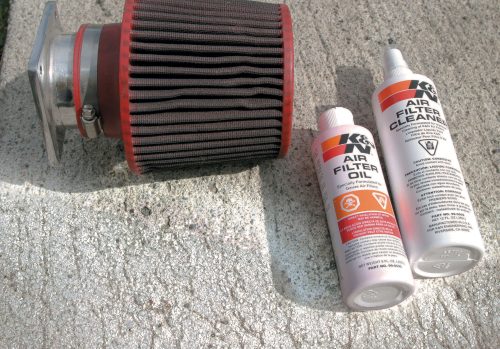
20. OVERLOOKED MAINTENANCE
Interestingly, some of the simplest power tricks fall under routine maintenance. Having a clean air filter, for example, will ensure that you are getting maximum airflow into the engine. New fuel filters are also smart—and that’s for starters. Good wiring connections and preventive maintenance on life-cycle parts is also wise.
21. GET A GRIP
If lucky, you could benefit from bigger brakes off a different vehicle. Do some research to see if there is some cross-pollination action in your near future. For example, 300ZX brakes and calipers will fit on a 240SX. ’Nuff said, go for it.
22. REAR DIFFUSER
This product is available commercially and has been used on many drag Hondas for years. The low-buck version is a series of 3-inch holes cut into the back bumper of your car, which allows air passing under the car to escape instead of pooling behind the back bumper and causing excessive drag.
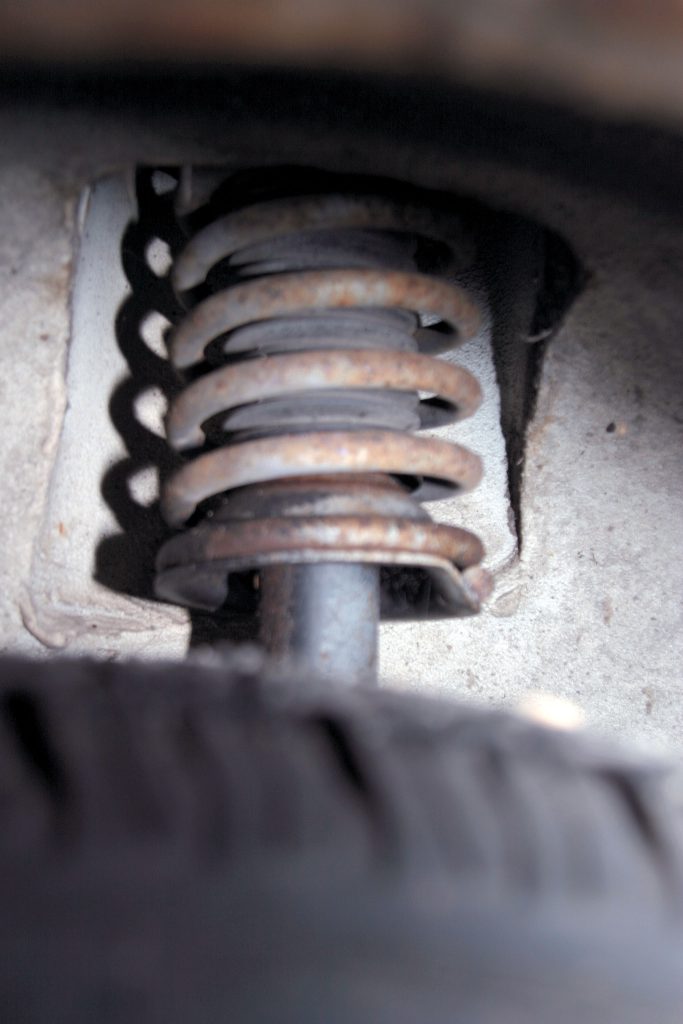 23. NAIL A WICKED HOLE-SHOT
23. NAIL A WICKED HOLE-SHOT
This is a simple yet very effective weapon for front wheel drivers. For drag racing at the track, get extra bump stops and install them in your rear suspension. This will limit the rear suspension travel, giving you better hook-up. You will nail better 60-feet times.
24. TIRE PRESSURE
Having the correct tire pressure not only ensures that you get maximum fuel economy, but also the best performance out of your high-performance tires. Check tire pressure every two weeks and adjust accordingly. New rims will leak.
25. TIMING IS EVERYTHING
If you have a good, consistent grade of fuel where you live—or better yet, 92 octane—then you can benefit from advancing the timing a few degrees to pick up some extra throttle response and more driveability. Be sure to use a timing light!
26. LEXAN WINDOWS
Replacing your heavy factory glass with lightweight Lexan will help your car in the weight department (and hence, accelerate quicker). A lighter car is quicker than a heavy one, so call FAL (866/203-5958) if you own a ’92-’00 Civic. If not, make your own.
27. BRAKE FLUID
This is too often overlooked. Brake fluid needs to be changed at least every two years and for a high-performance vehicle, every year. Use or upgrade to high-performance DOT4 brake fluid. It is as easy as draining the old fluid (completely), replacing with DOT4 and then bleeding the system. Note: this may make your pedal feel softer and is completely normal.
28. CRANK PROTECTION
When installing rods into a fresh engine, it’s an old tip to install a couple pieces of rubber hose over the rod bolts to prevent scratching the crank journals. You can buy these inexpensively, too.
29. RAM AIR SCOOP
This information is nothing new; nonetheless, it can be quite an effective addition. To pick up cooler outside air, make a funnel-like device that goes in place of the headlight or any other grille-area location that best fits your vehicle.
30. CUSTOM COLD-AIR INTAKE
If you have a car that doesn’t have a cold-air application available from the aftermarket, design your own. We did so on this ’95 Cavalier by using a couple intakes for an ’88 Civic. It worked like a charm.
31. KEEPING YOUR COOL
For a high-output application, take “keeping your cool” one important step further and replace your factory radiator with a high-flow aluminum unit. Not only does it look trick, it tends to make your cooling system much more efficient.
32. HEADER WRAP
If you have a turbocharged engine, the engine compartment temperature may have a tendency to get hotter than usual. One helpful tip to combat this heat is to use a thermal wrap on the downpipe, turbine housing and the headers.
33. HOOD WASHERS
By placing washers between the hood and hood mounting brackets and using longer bolts, you can lower the temperature of the engine compartment. Air will enter the engine compartment in much the same way as a cowl induction works.
33. BOOST LEAK CHECKER
This tool looks like junk, but it sure can help you find lost power. By fastening this on the hot side of the intercooler, you can test for leaks by pressurizing the system and spraying all the joints with soapy water. Bubbles would be your leak.
35 BRING BACK THE BLACK
If you have an older vehicle that has faded plastic trim, you can bring it back to life by using black liquid shoe polish. It dries quickly and lasts for weeks, even in the rain.
36. NO-POP OIL DIPSTICK
The problem of the oil dipstick popping out doesn’t happen to everyone, but if it does, there is a small fix. Either put a small pinch in the top of the tube or use a wire (or spring) to hold it in place.
37. NO RAIN
Rain-X is one cool product. Water actually sheets off the window surface once it’s applied as directed. Its application is much like a shampoo, only it goes on the outside surface. Some rods use it sans wipers.
38. CUSTOM HEAT SHIELD
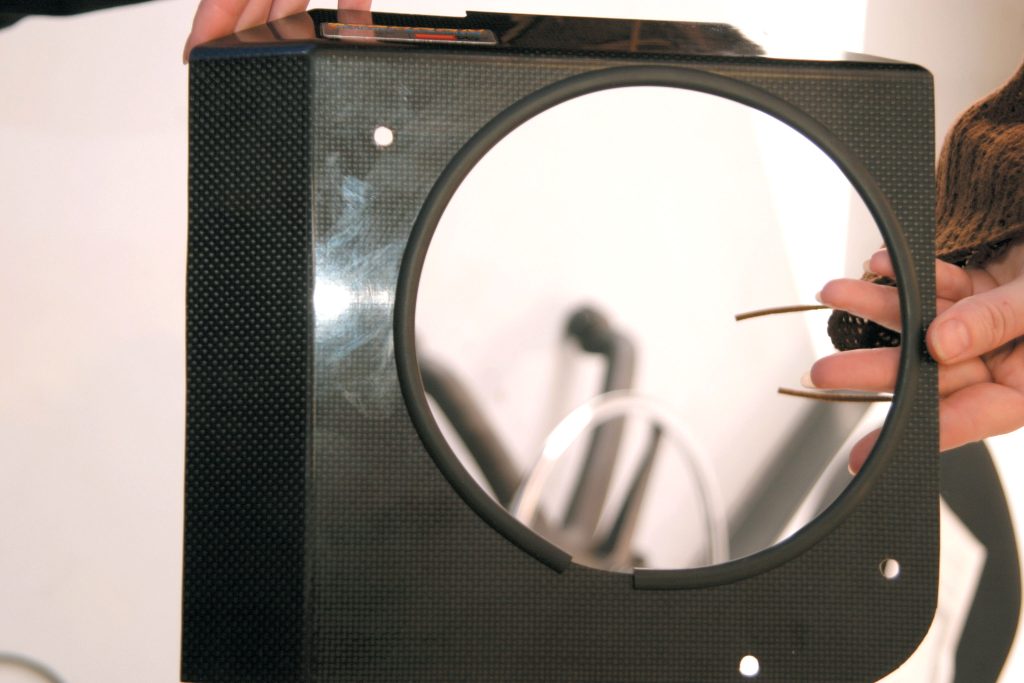
There are companies that sell intakes with these heat shields, but you can make your own out of stainless steel or any other material for that matter—and for cheap. It can be as simple as a flat piece of material that isolates the air filter from the engine heat.
39. POWER TERMINALS
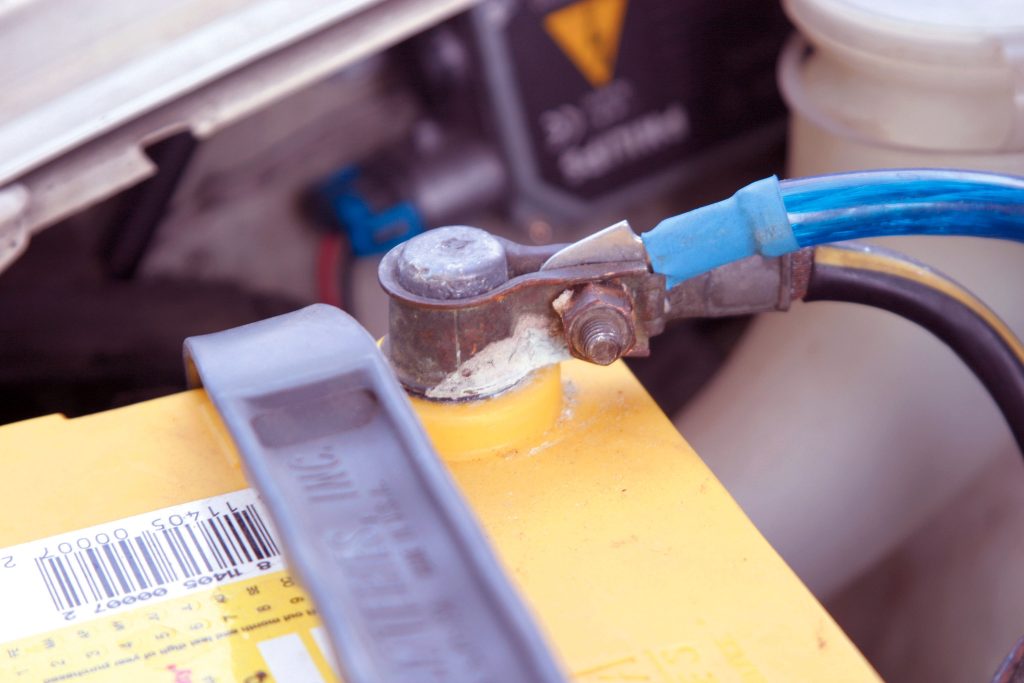 This is more than an eyesore. This factory terminal is very similar to many Japanese vehicles. It’s made as cheaply as possible, but by upgrading to a block-style terminal, accessories such as the alternator, starter and other current-demanding equipment will get the proper amount of current. Yes, this does affect horsepower.
This is more than an eyesore. This factory terminal is very similar to many Japanese vehicles. It’s made as cheaply as possible, but by upgrading to a block-style terminal, accessories such as the alternator, starter and other current-demanding equipment will get the proper amount of current. Yes, this does affect horsepower.
40. DSM 1G BLOW-OFF VALVE
This modification is popular among the DSM crowd. The first-generation DSM vehicles could withstand boost pressures to about 17 psi. With careful mods, it can hold upwards of 20 psi.
41. HACKED MAF
Another mod brought to you by the DSM dudes: by removing the lower chamber of the MAF, airflow can be increased substantially with minimal effort and a soldering iron.
42. SUBFRAME SPACERS
These can be bought or made and are used primarily on Nissans. The spacers pre-load the rubber bushings between the subframe and the body, thus helping to reduce wheel hop and body lean.
43. BUSHINGS
For very little cost, replacing worn and tired rubber bushings with urethane bushings will put life back into your suspension. In certain applications, this will be a major performance boost in handling.
44. ENGINE MOUNTS
Sometimes it’s the little things that make all the difference. When doing an engine swap, using mounts designed for a swap makes things a lot easier. Check this out prior to your engine install.
45. TOLUENE
Toluene is a solvent that can be found in the more serious hardware stores across the nation. Adding 10 percent (by volume) of this solvent to a tank of, say, 91-octane gasoline should increase the octane rating to approximately 116, which is great for forced-induction or nitrous-powered engines. For about $3 a gallon, you can’t go wrong—but it may not pass fuel check.
46. PROPANE INJECTION
This approach has been around for some time and is used with wet nitrous systems. Instead of using fuel, propane has an octane rating of 105 and allows you to get a fuel boost without disturbing the air/fuel ratio.
47. NO FOG
This is an old ice hockey tip. Tired of your visor in your helmet or the windows on your street car fogging up? Take a cloth with a dab of shampoo and wipe the inside surface. Take a clean cloth and completely wipe off the shampoo. No more fog!
48. REDLINE SHOCK-PROOF GEAR OIL
This product works great in transmissions that see heavy street or racing action. This oil features a solid dispersion that helps cushion gear teeth from shock loading. It also makes disassembly of the gear set easier.
49. ONE-DRILL DRILL SET

This may look like an odd tool and you may have well seen this before, but it’s so handy it’s worth repeating. The Unibit is a stepped drill bit that allows you to make different size holes (larger) without the guesswork and without changing bits.
50. VHT TRACK BITE
This compound is applied to the drive wheels of drag vehicles to improve traction on less-than-ideal track surfaces. If you have problems hooking up, this product can help. This is the same company that makes traction compound for dragstrip surfaces.
51. WHEELIE BAR SHOE POLISH
You may have seen crewmembers of pro drag teams applying a white substance to the wheels of wheelie bars. By using white shoe polish, you can determine for how long the front end is lifting; thus, it helps you fine-tune your suspension setup.
52. NO DRAG
If you don’t wish to cut up your bumper to minimize drag, you can close up these areas with a piece of sheetmetal. It keeps the air out and is virtually invisible to onlookers. Paint it black or body color.
53. GROUND WIRES
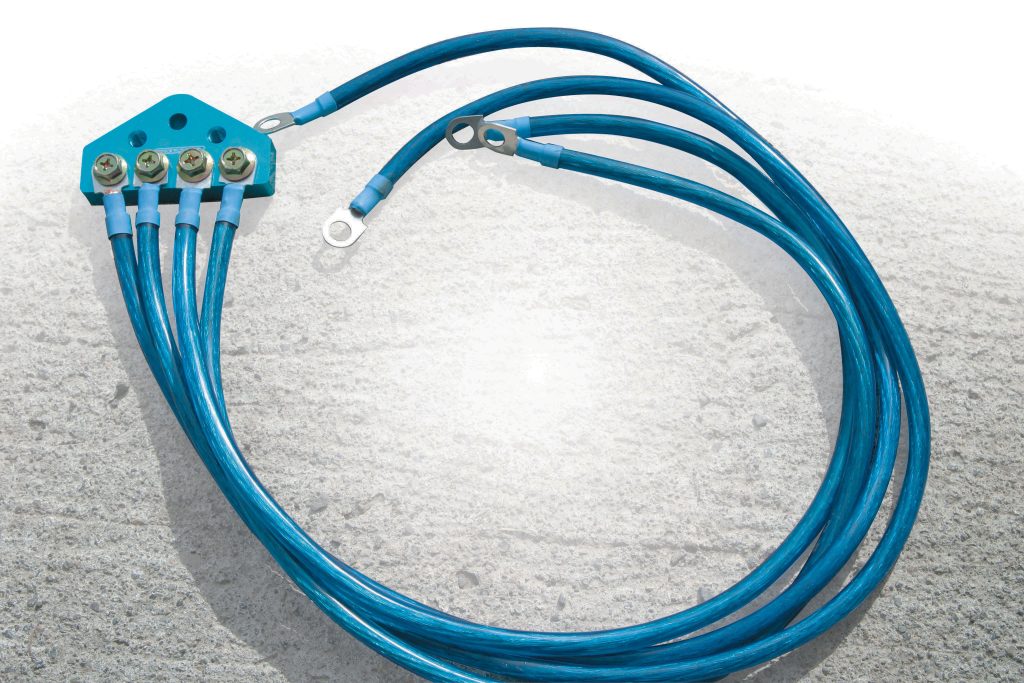 Think car audio. By upgrading the ground wires, you alleviate the load on the charging system. Using heavier-grade (larger-diameter) wire, you reduce the amount of electrical resistance. Since 12-volt electrical systems pull from ground, using this product makes sense and it does make dyno-proven power.
Think car audio. By upgrading the ground wires, you alleviate the load on the charging system. Using heavier-grade (larger-diameter) wire, you reduce the amount of electrical resistance. Since 12-volt electrical systems pull from ground, using this product makes sense and it does make dyno-proven power.
54. INDEXING SPARK PLUGS
This can be costly, plug-wise, but worth it in the end. Using a marker pen, mark the porcelain inline with the electrode. Screw the plug in the head and tighten. Make sure the mark aligns the way you want the opening of the electrode to face, favoring the intake valve. Indexing can be adjusted with various thickness washers or try more plugs. They are not all the same thread-wise.
55. WINDAGE TRAY
This device is both simple and effective and, with some thought, you can fabricate your own. Basically, a windage tray keeps oil from splashing up and hitting the crank, which effectively tries to slow the crankshaft, reducing power. Keep the oil in the pan.
56. SHORT SHIFTERS
Short shifters like a B&M shifter enable quicker, firmer shifts by reducing the amount of time required to select a gear. Positive shift stops are also helpful, but be sure to set them properly.
57. ACURA TYPE-R SHIFTER
This shifter is the weapon of choice. Pros such as Gary Gardella call it “the best short shifter for a Honda, especially for drag racing.”
58. CUTTING OFF THE FUEL CUT-OFF
There are electronic devices available that bypass the factory fuel cut-off limit on turbocharged vehicles. By using such a device on your modified engine, you can run more boost without having the fuel cut out on you. A very popular mod in the DSM crowd.
59. HONDA SHIFTER BUSHINGS
More often than not, these inexpensive little bushings can cause all kinds of shifting gremlins if worn out. Inspect and replace often.
60. ALIGNING WHEELS
This is a must, especially on older cars or cars that are slammed. It is hard to go fast or for the car to handle properly when the wheels are pointed in the wrong direction or not in alignment with one another. Find an alignment shop willing to play with settings, as opposed to one that will use only the stock alignment specs.
61. TIRE PRESSURE
Having the correct tire pressure on a street/strip car takes work to find the right combination. Air pressures will be different in street trim compared to dragstrip needs. To nail a great hole shot, pressure will be lower than what is needed for road handling. Work on this one—there’s lots of free performance here.
62. LSD SWAP
A great way to put power to the ground is to swap in a limited-slip differential from an aftermarket company or if you are lucky, another model of your car. For example, an LSD from a ’95 Infiniti J30 will fit in a 240SX.
63. LOSE WEIGHT FAST
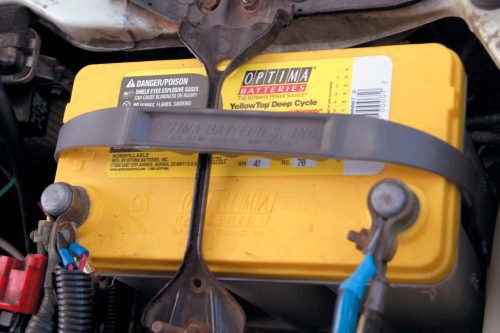
We mentioned weight is the go-fast enemy, so try replacing your conventional lead battery with a smaller, lighter gel cell or specialty-sized battery. Stay on top of maintenance, but every pound counts.
64. OCTANE BOOSTERS
A subject of debate for some enthusiasts, but they do help if you don’t have access to high-octane fuel. Forced-induction and nitrous-powered vehicles can benefit from these cocktails.
65. PISTON INSTALL TOOL
A simple tool that keeps the piston rings compressed while inserting the piston in the cylinder. This tool prevents rings from being broken.
66. ADJUST YOUR VALVES
Another routine maintenance procedure that can bring performance gains when done properly. Some vehicles are more difficult to adjust than others are and all of them need to have stone-cold engines before any adjustments can be made.
67. OIL PANS
There are several companies making alloy oil pans for Honda, Mazda, Dodge, Toyota and Mitsubishi. These pans have a kick-out sump that keeps oil from splashing on the crankshaft. (Some will have a windage tray, so if you have such a pan, eliminate Tip 55.)
68. FUEL FLOW
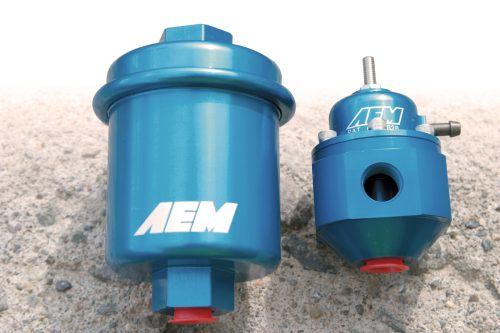 Upgrading to a less-restrictive fuel filter keeps your fuel clean and flowing. Also, be sure your fuel filter is not a restriction. Check this on a chassis dyno, using an adjustable fuel-pressure regulator to help you fine-tune your modified engine.
Upgrading to a less-restrictive fuel filter keeps your fuel clean and flowing. Also, be sure your fuel filter is not a restriction. Check this on a chassis dyno, using an adjustable fuel-pressure regulator to help you fine-tune your modified engine.
69. REPUTABLE TUNER
This is a no-brainer: your ride will only perform as well as it’s put together and tuned. Spend the time and research tuners in your area. Talent comes with a price, so be prepared to pay if you want the best.
70. ICE
Very simple and free! At the dragstrip, a bag of ice placed on your intake manifold or intercooler can net you a few extra ponies, some days more.
71. THERMAL COATINGS
These products work the same way as header wrap, except it looks nicer and it lasts longer. In addition, the applications aren’t only limited to exhausts—pistons and intake manifolds can benefit, too.
72. O2 SENSOR
This sensor monitors the emissions of your engine and determines whether the engine should run rich, lean, or stoic. When the sensor wears out, the car may go into “limp home” mode, where performance is noticeably decreased, but the car is able to be driven. Inspect every year and replace as necessary.
73. ROCKER ARM STOPPERS
This is something that is mainly used on the Nissan SR20DET engine. This product helps control valvetrain float at high RPM.
74. RESET YOUR ECU
Some vehicles can benefit by resetting the ECU after performance modifications have been performed. This can be done by removing the ECU fuse for a period of time, then replacing it. This is applicable to OBD-I.
75. INDEXING CAMSHAFTS
Considered crucial to making power when installing aftermarket camshafts, in actuality any cam must be properly indexed (to the bottom end). As aftermarket cam profiles can be different from stock, advancing and retarding the cam(s) can also be effective.
76. PHENOLIC SPACER
This device can be made easily out of a non-metallic material. The idea behind this is that it keeps the cylinder head from heating up the intake manifold.
77. UPGRADE YOUR MAF
While this may not be applicable to all vehicles, it does work on some. By upgrading your MAF to one that is less restrictive, more power can be realized.
78. TRUCK-STYLE COOLING FAN
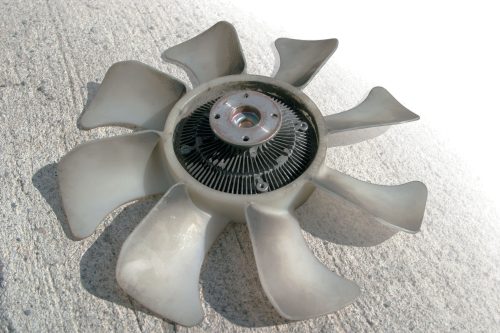
Crank-driven cooling fans were intended for big V-8s and trucks. If your car comes with one, replace it with an electric fan. Not only will you get rid of that “whuurrrr” sound, you will also pick up some additional power because the engine has one less accessory to turn.
79. CAM SWAP
This is something that isn’t new, but if you are one of the lucky ones, you can benefit from cam swapping with an engine of a different year or engine model. One example is swapping out a set of B16A cams for Type-R cams.
80. SWAP THE HOT CAM
Like the previous tip, it is possible that the exhaust cam has a more desirable profile. This swap can be done by re-pinning the cam sprocket on some engines; on others, it’s even easier. See your engine technician and talk exhaust cam specs. You’ll see what we mean.
81. LIGHTING
This is a simple one, but can be dramatic. Replace your yellow stock headlight bulbs with plasma white or Xenon lights. The difference is remarkable and looks cool, too.
82. WHEEL BALANCING
Drag racers found this out the hard way; road racers have been doing it for years. Rather than statically balance (bubble balance) wheels, dynamically balance them. Drag racers have picked up as much as a tenth of a second in the quarter-mile.
83. KNOCK SENSORS
This is not for everyone. Some owners in the 350Z community have disconnected their knock sensors and picked up close to 10 hp. Apparently, the knock sensors are very sensitive to vibration and pull timing back considerably, thus reducing power output.
84. BLIZZAK RACING
This is the poor man’s drag radial. The soft compound of these tires gives you great grip at the cost of people laughing at you.
85. COPPER SEAL
This high-temperature gasket maker is handy when building a custom turbo kit, as it can be used as added insurance against power-robbing exhaust leaks.
86. DUST OFF
This is a compressed gas that is found in art supply stores, used for dusting off artwork without touching it. In our case, try spraying it on parts that need to be cooled, i.e. the intake manifold.
87. TRANS FLUIDS
If you change the type of fluid in your automatic transmission, this could result in better shifts. The accumulators react faster, allowing the various clutch controls to react quicker. This is due to the viscosity and friction modifiers in the fluid. Try it next time.
88. TWO-STEP REV LIMITER
This feature comes with aftermarket ignitions, but it can be purchased separately as well. This device helps build boost on the line by spooling the turbo and acts as a launch control by enabling you to launch at optimum rpm.
89. TITANIUM WHEEL NUTS
These are more expensive than regular lug nuts, but when you weigh all the lugs together, they do help reduce un-sprung weight. Enough attention in these areas and presto—you got yourself a serious diet.
90. TITANIUM EXHAUST
The same goes for lightweight titanium mufflers and exhaust systems. While it isn’t as exotic as it sounds and is more expensive than stainless, it’s also lighter. Less weight is better and if you can’t afford it all at once, start with the mufflers, add the pipes.
91. FIBERGLASS I.C.E.
Have your subwoofer enclosure made from fiberglass. It’s considerably lighter than the conventional wood/metal types and we all know how stunning these custom enclosures can look.
92. DON’T DROP THE PLUGS
When installing spark plugs in OHC engines, it’s easy to drop a plug down the hole, potentially bending the electrode and altering your preset gap. To avoid this, try using a length of rubber or silicone tubing to pass the plug and get a few turns before using a socket.
93. REAR CAMBER ADJUSTMENT
If you have access to a die grinder, you can grind out a portion of your rear upper control arm so that you have a little more adjustment. You will notice the interference to be removed.
94. INTERCOOLER SPRAY
Using a set of injectors or washer nozzle spray and a remote reservoir filled with a mixture of water and alcohol, you can make your own IC spray for very little outlay.
95. YANK THE I.C.E.
If you are going racing, pull out the audio system in the back. This can save you 50 to 100 pounds by removing it. If it is a dual-purpose ride, install the equipment with quick disconnects, so it is easily removed.
96. WATER INJECTION
A fine mist of water spray is injected into an engine to help reduce the chances of detonation. A great addition to any forced-induction engine, but again, check fuel/air curve and overall boost on a dyno.
97. STOP HOSE BLOWING
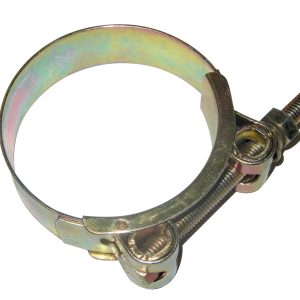
Conventional worm gear clamps don’t do a good enough job of holding intercooler piping together. By replacing them with T-bolt style clamps, you will be less likely to toss a hose under boost.
98. OBD-II DATA LOGGING
There are programs available for your smart phones and tablets that actually allow you to read data acquired from the OBD-II ECU. This is useful when you have upgraded your car and want to see exactly what the ECU is doing. Programs such as Pocket Logger are available for both OBD-II and OBD-I.
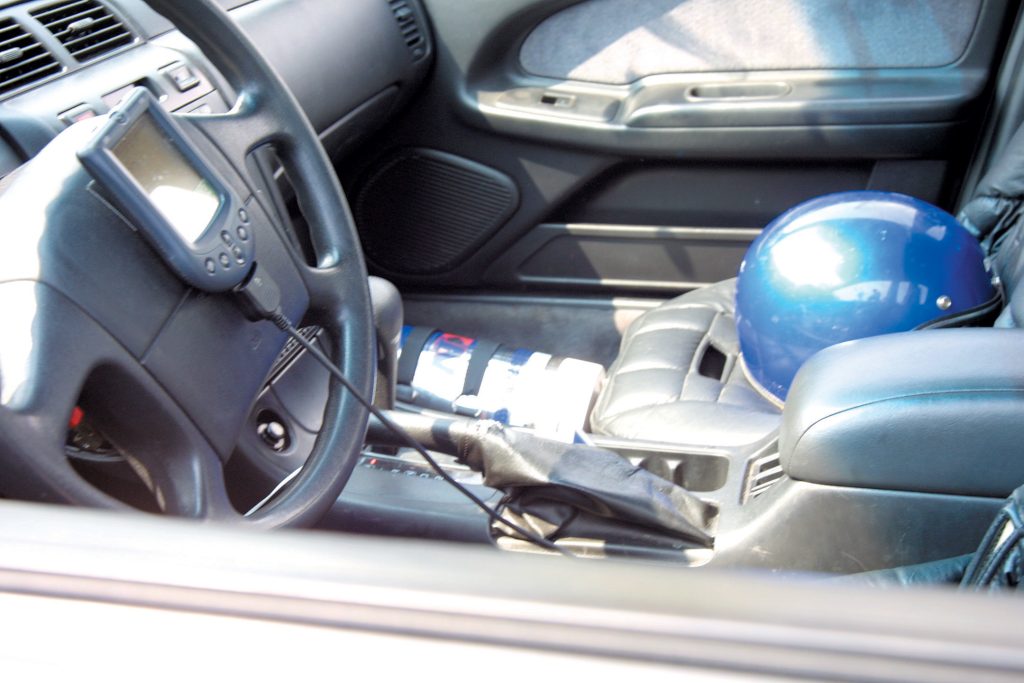
99. CLAIM YOUR TOOLS
If you work in a busy shop, it’s easy to confuse your tools with someone else’s. To avoid this, do something unique, like painting your tools a different color or add stripes, etc. to avoid arguments.
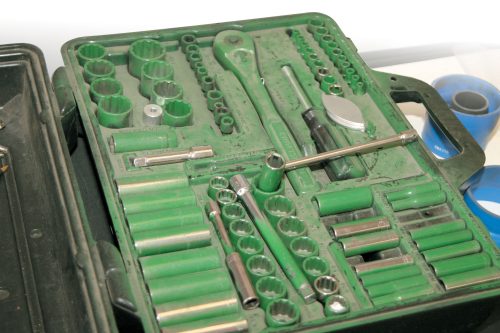
100. SHOE POLISH ON TIRES
This works for both autocross and drag racing. If you want to see how much sidewall rollover you are getting or how much contact the tire is making during a run, make a band with white shoe polish along the outside of the tire. After the run you will see how much is less, which will tell you what the tire is doing.
101. RELOCATED BATTERY
Not only does this clear up clutter under the hood, it makes it easier to plumb intercooler piping, etc. In some cars like AWD and RWD vehicles, it also helps traction.
102. INCREASE COOLING CAPACITY
Do some research—you may be surprised to find that there is a larger radiator from a different vehicle that will fit your application. The improved cooling capacity will increase the longevity of your engine by keeping it cool. This is especially true if modified.
103. ATMOSPHERIC WASTEGATE
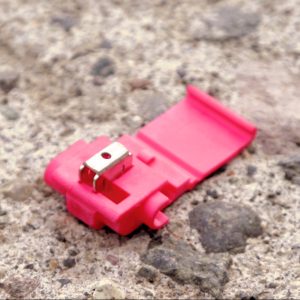
Not environmentally sound, but it yields decent power gains. The street-legal way to do this would be to have a flapper valve that is controlled from the inside, which switches from atmospheric to non-atmospheric. Usually good for 0.3 second in the quarter.
104. STAINLESS-STEEL BRAKE LINES
Everyone knows about this mod, but it is worth remembering that by replacing your flexible rubber lines with braided lines, your brake pedal will feel firmer and more responsive. Remember too, high-performance racecars do not use rubber brake hose.
105. ’86-’87.5 MAZDA RX-7 INJECTORS
These babies are 550cc low-impedance injectors that can be found at reasonable prices in wrecking yards. They should be cleaned and flow balanced before use.
106. SILICONE COOLANT HOSES
Yes, they look pretty, but they also outlast conventional rubber hoses and are resistant to both oil and gas. Sounds like an easy decision to us.
107. LOSE THE SIDE-MOUNT IC
Some cars such as the Talon/Eclipse, Corrado G60 and SR20DET-equipped vehicles come with side-mount intercoolers. Take a trip to the wreckers and look for an intercooler from a Saab 900, Isuzu cargo truck, Audi 5000 turbo or Mitsubishi Starion. All of these intercoolers are cheap and can be used as front mounts for better cooling of the air charge.
108. INTERCOOLER PIPES
If your car comes with plastic or rubber intercooler pipes, upgrade them to alloy or stainless-steel piping. The factory piping expands considerably under boost and that air pressure would be better served in the combustion chamber.
109. PORTED O2 HOUSING
This will work on just about any turbo machine that has this sort of setup. By porting the O2 housing, the exhaust flow will improve, thus allowing the turbo to spool quicker. DSM enthusiasts rave about this mod.
110. STAINLESS-STEEL CLUTCH LINES
If braided stainless lines work for brakes and you have a heavy-duty clutch and pressure plate setup, then you should consider upgrading the pressure line that runs to your slave cylinder with a braided stainless line.
111. CARBON FIBER PANELS
Replacing heavy steel panels, including trunk lids and hoods, with real carbon fiber units is an easy way to upgrade the look of your ride while saving weight. You will see even more CF use over time.
112. CHILL OUT
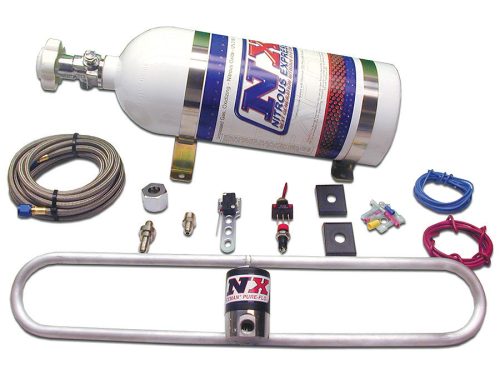 Using an intercooler spray bar can net you a horsepower gain by simply spraying nitrous oxide or carbon dioxide over your intercooler to lower the surface temperature of the fins. This has the effect of “icing” down the intake charge.
Using an intercooler spray bar can net you a horsepower gain by simply spraying nitrous oxide or carbon dioxide over your intercooler to lower the surface temperature of the fins. This has the effect of “icing” down the intake charge.
113. COOLER OIL
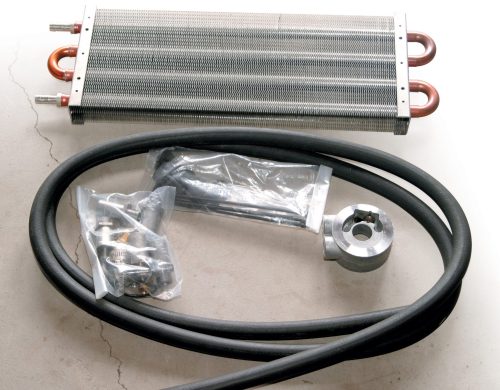 This is a definite must-have if your car is force-fed by a turbocharger. We all know that oil is the lifeline to your engine and the better condition you keep that oil, the longer your engine will last. Keeping your oil cool and installing aftermarket oil cooler directly in the air stream is one of the best ways to protect your investment.
This is a definite must-have if your car is force-fed by a turbocharger. We all know that oil is the lifeline to your engine and the better condition you keep that oil, the longer your engine will last. Keeping your oil cool and installing aftermarket oil cooler directly in the air stream is one of the best ways to protect your investment.
114. GOT A LOUD MUFFLER? SHUT IT UP
If you have access to a jigsaw and MIG-welder (a hobby one will do), you can make your own silencer. Cut some sheetmetal and make a baffle to fill the 5-inch opening in your exhaust that can be held in by a bolt and nut. Take the baffle out for racing and put it in for the street. This will keep the law off your back, too.
115. ELIMINATE HICAS
On late-model 240SX hatches and 300ZXs came Nissan’s version of four-wheel steering. To some enthusiasts, it’s a pain; therefore, companies like Stillen have designed HICAS eliminators, so the car behaves like a traditional front-steering car. So much for technology.
116. HONDA FUEL-PRESSURE REGULATOR MOD
The stock Honda FPR is restrictive when the time comes to extract more performance from the engine. The restriction is in the return orifice. This problem can be solved if you drill a 0.35-inch hole slightly angled toward the return port of the regulator. This mod helps alleviate some of the pressure caused by the restriction at lower rpm levels.
117. WHEEL KEY UPGRADE
If you have tuner-style lug nuts on your wheels, they could have come with a cheap key to remove them. These keys can eventually strip and/or destroy your lug nuts. Do yourself a favor and head to the hardware store to buy an Allen bolt socket that fits and will remove your lug nuts. A socket won’t strip like a key will.
118. SUPRA TT OR MITSUBISHI 3000 VR-4 FUEL PUMP
If you can find a wrecked example of these cars, first mourn the loss and then grab the fuel pump. These things flow extremely well and make a great in-tank upgrade for those that are budge-minded.
119. SPEED CLIP IN THE THROTTLE LINKAGE
This works well in old-school VWs that have a secondary butterfly in the throttle body. By installing either a screw or speed clip in the linkage, you can open the second butterfly sooner, thus reaching full throttle sooner. Great for drag racing.
120. FUEL LINE HOSE CLAMPS
Get rid of those conventional, worm gear hose clamps and replace them with proper fuel line hose clamps. The worm gear clamps actually cut into the hose and can lead to leaks and even worse, a fire. Don’t fool or shortcut the fuel system.
121. SKINNY TRACK TIRES
A cheap solution for front runners or rear runners on drag machines or weekend warriors is to head to the wreckers and look for the spare from a Ford Thunderbird Turbo coupe. These are alloy wheels that are light and can be fit with a legal front-runner tire from your favorite tire company. You can also use the spares from third-generation RX-7s and fit either a skinny or motorcycle tire on it, if you have a five-bolt pattern.
122. DELETE FRONT SWAY BAR
This sounds crazy, but for some drivers, they feel their cars actually handle better without the front sway bar. We did this on an ’80 Rabbit, using a Neuspeed lower brace and feel that it handled better than a similar ’84 Rabbit that had the sway bar. Go figure!
123. A’PEXI SUPER AFC
This product is so popular among enthusiasts that we just had to include it. These can be purchased new or off the ‘net at low prices and allow you to extract considerable amounts of power from your setup with careful tuning.
124. LIGHTENED FLYWHEEL
By replacing your stock flywheel with a lighter design, your engine will be noticeably more responsive and more willing to rev. Note: on some engines there may be some extra vibration, but that’s nothing that the benefits don’t outweigh.
125. GOOP ADHESIVE
If you are in a jam and need to temporarily repair something on your car, this product has worked for us—plus it’s cheap!
126. ZIP TIES AND VACUUM LINES
Loose vacuum lines can cause more problems than you can imagine, plus they are a pain to find, too. More often than not, a line has simply slipped off. Using a small zip tie on the end of each hose will fix this problem.
127. 12-VOLT TREBLE LIGHT
If you tend to take long trips or like to race at night, a treble light that can be connected directly to your battery is a lifesaver, especially when working under poor light conditions.
128. VR6 OIL DRIP PROBLEM
The VR6 has a bad habit of leaking oil from the breather hose. An easy solution to this problem is to use a hose clamp on the breather tube to stop the smelly mess.
129. REMOVE 2G BOV TUBE
This will make your blow-off valve more responsive by simply removing the secondary tube.
130. LISLE PANEL REMOVER
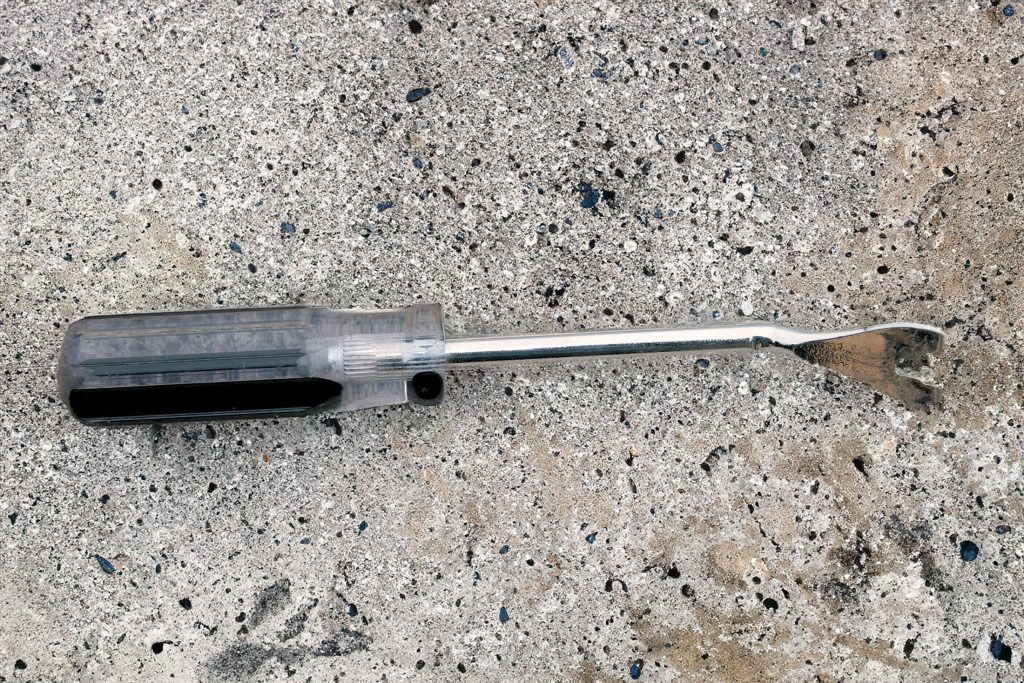 This is another handy tool and one that is available at auto parts stores. This tool allows you to remove panels while minimizing the chances of breaking them or the fasteners that secure them.
This is another handy tool and one that is available at auto parts stores. This tool allows you to remove panels while minimizing the chances of breaking them or the fasteners that secure them.
131. T-TAPS AND SCOTCH LOCKS
It may not be a good idea to use these types of easy-fix items in a high-performance application, since they can cause more headaches than you can imagine later. Spend the time necessary to solder your connections, then they are permanent fixes.
132. BAFFLED OIL CATCH CAN
Having oil enter the intake tract can skew emissions and even lead to detonation. By using an oil catch can that has baffles or a breather, you can avoid this problem. This will also allow you to run a few more pounds of boost over a stock PCV-equipped car.
133. OIL ON THE OIL FILTER
Have you ever had to really struggle to remove an oil filter? Solve this problem next time by applying a dab of oil on the rubber gasket that is located on the filter seal. This will help keep the gasket from drying out and will make removal easier next time.
134. 11-INCH VW CORRADO BRAKES ON OLDER VWS
By either fabricating an adapter plate or purchasing one from a VW tuner, you can retrofit your 8.5-inch braking system with 11-inch rotors relatively easily on most older VWs. An inexpensive, big-brake swap.
135. REVERSE BOV ON A 2G DSM
By reversing the blow-off valve on a second-generation Talon/Eclipse, you can run more boost than stock without buying an aftermarket unit.
136. MUSTANG MASTER CYLINDER
Yes, believe it or not, domestic parts will work on some import cars. In this case, a Mustang master cylinder is a direct bolt-on for pre-’83 VW Rabbits and Jettas. If you have already upgraded the braking system on your MK1, then this is a cheap, effective finishing touch.
137. RESTRICTIONS ON BOOST CONTROLLER
On the DSMs you can remove the restrictor on the stock boost controller, which will enable more boost to be created on the stock setup.
138. AFTERMARKET HONDA CAM SEAL
The seals on the B-series Hondas are notorious for leaking and making a mess under the hood. Replace these stock seals with an aftermarket design (available from numerous companies) and you can easily solve this problem.
139. CAM ANGLE SENSOR
If you swap out a first-generation DSM cam angle sensor and install it on a second-gen DSM, you will be able to run more timing, which in turn will give you more power. A word of warning: this may turn on the “check engine” light on occasion.
140. DAMN TRACTION CONTROL
On the VW Golf GTI with the VR6 engine came a handy device called traction control. This is a pain when drag racing. Disconnecting your speed sensor located on the rear of the transmission can disable this feature on the GTI.
141. CHECK IGNITION WIRES
If you are unsure as to the condition of your ignition wires, perform this simple test: take a spray bottle full of water and while the engine is running, spray the ignition wires. It should be somewhat dark when you do this test. If you see arcing, you know that it is time to replace the wires.
142. TORQUE WRENCH

Every do-it-yourself mechanic should have one of these and learn to use it religiously. It can even be used on spark plugs. Everything on your car has a specific torque rating. Learn and use them.
143. MOLYSLIP COPASLIP
This product is great for lubricating caliper sliders, as it will not clump up or corrode like some lubricants. As in any product, be sure of its application purpose, heat tolerance and its ability to lubricate throughout expected exposure.
144. TIRE PRESSURE GAUGE
Keep one of these inexpensive tools in your glovebox and check your tires religiously. For optimum performance and tire life, it is essential that proper air pressure be used for the tire, rim width and the type of performance to which the tires will be subjected.
145. BRAKE PROPORTIONING CONTROL
Want to have absolute control over your braking bias? Install a bias controller that is adjustable from inside the car. There’s also the Wilwood proportioning valve, which is adjustable front-to-rear.
146. PISTON SWAP
Cross-breeding occurs in all enthusiast groups. For Nissan 240SX fans, you can take the KA24DE pistons and put them in a KA24E for an increase in combustion; Type-R pistons in GS-R engines and so on. Going with a high-compression piston will give you a mild bump in performance, but check piston-to-valve clearance.
147. PURGE
If you have a nitrous system, spend the extra coin and buy a purge valve. Not only does it look cool, but it also allows the nitrous to hit sooner once the line is purged of any air. Best thing is to purge the nitrous a few times before you are about to launch.
148. DISABLE SPEED CUT
On the 240SX, the speed limiter is set at 115 mph. If you race at the track and can exceed that speed, but the ECU won’t let you, there is a way around it. By unplugging the speed sensor on the transmission, you will lose your speedometer and cruise control, as well as the limiter, but you’ll go faster.
149. CHEAP BOLTS AND TOWER BARS
Unless you shell out good coin for strut tower bars, chances are that the ones you have are equipped with cheap, weak bolts that will no doubt strip or break. Head to your local hardware or fastener store and buy some hardened bolts. Look for five marks on the head of the bolts, noting that they are a grade 8.
150. PRETTY PLUMBING
If you have a direct-port nitrous system and want to have fancy plumbing, you need a line bender like this one. Two different size radii can be made with this bender and it’s fun doing it.
